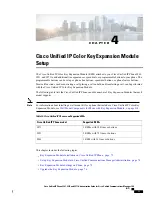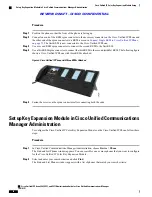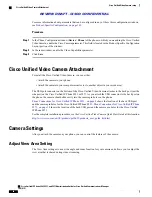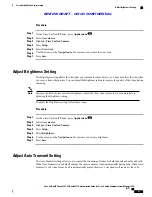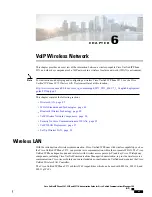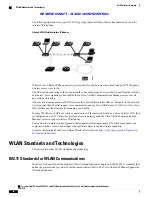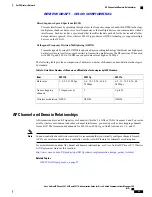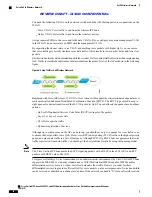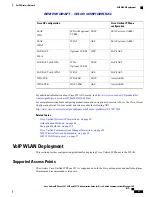
The following figure shows a typical WLAN topology that enables the wireless transmission of voice for
wireless IP telephony.
Figure 3: WLAN with wireless IP phones
When a Cisco Unified IP Phone powers on, it searches for and becomes associated with an AP if the phone
wireless access is set to On.
The AP uses the connection to the wired network to transmit data and voice packets to and from the switches
and routers. Voice signaling is transmitted to the Cisco Unified Communications Manager server for call
processing and routing.
APs are critical components in a WLAN because they provide the wireless links or
“
hot spots
”
to the network.
Cisco requires that APs that support voice communications use Cisco IOS Release 12.3(8)JA or later. Cisco
IOS software provides features for managing voice traffic.
In some WLANs, each AP has a wired connection to an Ethernet switch, such as a Cisco Catalyst 3750, that
is configured on a LAN. The switch provides access to gateways and the Cisco Unified Communications
Manager server to support wireless IP telephony.
Some networks contain wired components that support wireless components. The wired components can
comprise switches, routers, and bridges with special modules to enable wireless capability.
For more information about Cisco Unified Wireless Networks, see
http://www.cisco.com/en/US/products/
WLAN Standards and Technologies
This section describes WLAN standards and technology.
802.11 Standards for WLAN Communications
Wireless LANs must follow the Institute of Electrical and Electronics Engineers (IEEE) 802.11 standards that
define the protocols that govern all Ethernet-based wireless traffic. The Cisco Unified IP Phone supports the
following standards:
Cisco Unified IP Phone 8961, 9951, and 9971 Administration Guide for Cisco Unified Communications Manager
10.0 (SIP)
84
VoIP Wireless Network
WLAN Standards and Technologies
REVIEW DRAFT - CISCO CONFIDENTIAL


